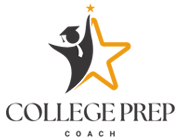The Math section focuses on the areas of math that play the biggest role in college and career success:
- Algebra
- Advanced Math
- Problem-Solving and Data Analysis
- Geometry and Trigonometry
Like the Reading and Writing section, the Math section is divided into 2 modules. Over the course of the Math section, you’ll answer multiple-choice and student-produced response questions that measure your fluency with, understanding of, and ability to apply the math concepts, skills, and practices that are most essential.
Approximately 30% of Math questions are set in context. These in-context (“word”) questions require you to consider a science, social studies, or real-world scenario and apply your math skills and knowledge, along with an understanding of the context, to determine the answer to each.
Number of questions from each skill Tested
The math questions are divided into four categories. Questions from all four categories appear in each test module. Across each module, questions are arranged from easiest to hardest, allowing you to have the best opportunity to demonstrate what you know and can do.
| Type of Math |
Number of Questions |
| Algebra |
13–15 |
| Advanced Math |
13–15 |
| Problem-Solving and Data Analysis |
5–7 |
| Geometry and Trigonometry |
5–7 |

